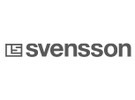Growers have been acutely conscious of their energy usage since the ongoing conflict in Ukraine flared up into the Battle of Kyiv in February 2022. Energy prices soared. Some have made use of Svensson's Energy Monitor plug-in for the Let's Grow platform to trim the energy costs of their climate screen-equipped greenhouse. But even as energy prices fluctuate, a further imperative has come more squarely into view.
Run a furnace that is fed with natural gas, coal, heating oil or woodchip and you generate CO2 and contribute to global heating. Is it time to add a CO2 emissions module to Let's Grow?
"They won't need to do that," says Svensson Climate Consultant, Paul Arkesteijn. "It has been built into Energy Monitor for more than a year now. In a few clicks, you're seeing the CO2 impact of your day's growing, as well as the impact on your financial bottom line."
Energy Monitor enables growers to see not just their Svensson screen energy savings at any moment, but what their energy use might have been had they adopted a different approach to their day's growing. The same goes for CO2.
Based at Hellevoetsluis in the Netherlands, Arkesteijn says that growers are increasingly becoming aware of the overlap between their financial interests, and environmental concerns.
What might previously have been a matter of soft data —company ethos, personal engagement or brand—is now making its way into the hard data of the company income statement.
At Svensson's Kinna headquarters in Sweden, Emelie Hultberg, Sustainability Controller, says the changes that are coming to larger growers are right there to see in the job title of her relatively new role with Svensson.
"I studied textile engineering, entrepreneurship, and innovation before my PhD on sustainability and circular business models," she says.
"Five years ago people like me might have been part of quality assurance in a company like Svensson," she says. "I never imagined that here at Svensson I would be hired into the finance department!"
Most users today use Energy Monitor's data dashboard to save money, with missed savings shown in red above. But cash savings also mean CO2 savings when the fuel is fossil-based and Energy Monitor will specifically report these as well.
 Emelie Hultberg
Emelie Hultberg
Hultberg says it's a sign of the times facing Svensson and other suppliers to horticulture, as well as growers themselves.
"The new Corporate Sustainability Reporting Directive (CSRD) which people are all talking about all over Europe seeks to put sustainability and financial data on a par."
Small to medium-sized enterprises will begin to feel two kinds of pressure.
One is from above. Investors are looking to finance or own greener companies and this may well mean higher capital costs for those who use coal and other fossil fuels. Meanwhile, purchasing officers at exchange-listed companies are increasingly asking their suppliers about CSRD compliance, even if those companies are too small to face reporting obligations.
The other pressure is from the grassroots up. Consumers, who for years have been expressing preferences for greener products, are expected to be empowered with CSRD data to make even more pointed demands of wholesalers.
"Right now," says Hultberg, "it's a matter of creating transparency."
Arkesteijn shares an example: "A five-hectare tomato greenhouse in the Netherlands saved €200,000 in energy costs over a year using Svensson's screens," he says. "That translates to significant CO₂ reductions – with one cubic meter of natural gas equating to about 1.5-1.9 kg of CO2."
"These figures aren't just theoretical — growers can see their savings grow daily, tracked precisely by the Energy Monitor's dashboard — and that goes for CO2 as well."
Hultberg says there will be more environmental impact data available than ever before, and in many companies, the sustainability part of the annual report will be longer than the company's financials.
"Tools like Energy Monitor, with its live CO2 tracking, will come into focus as the new directive beds in because they provide day-to-day leverage to impact emissions," says Arkestejn.
Hultberg agrees: "And once these data are being reported and transparency comes, the next demand from investors and consumers will be YOY ."

For more information:
Ludvig Svensson
[email protected]
www.ludvigsvensson.com
